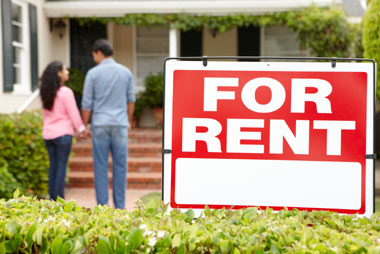Suburban rent-price growth is outpacing its urban counterpart for the first time in years

In some of the hottest housing markets in the US, renters are looking outside of the city as urban renting is becoming more expensive, according to a new report from Zillow.
For the first time in four years, the monthly cost of suburban rent is rising faster than the cost of urban rent. The monthly cost of rent in the suburbs is up 2.5%, versus a 2.3% increase in urban rent.
“An increase in multifamily construction has slowed rent growth across the country, with rents rising at their slowest pace in five years. The suburbs often offer larger apartments and more single-family homes for rent with more space – about 19% of all single-family homes in the US are rentals, up from 13% in 2005,” the report said.
Hot housing markets such as Nashville, San Francisco and Seattle are seeing an uptick in the suburban rental trend as rent becomes increasingly expensive.
Zillow Chief Economist Svenja Gudell listed hardship in rental affordability, an inclination to newer apartments and preference for the spatial capacity of single-family homes in the suburbs as some of the reasons for this new trend.
“Rents themselves are still lower in the suburbs, but if demand keeps growing for suburban rentals and supply continues to lag, that will also start to change,” Gudell said. “As more formerly urban renters move to the suburbs in coming years, we'll likely start seeing more apartment buildings and walkable amenities popping up in those communities."
Related stories:
Construction of single-family built-for-rent homes declines
Multifamily leads to decline in housing starts
For the first time in four years, the monthly cost of suburban rent is rising faster than the cost of urban rent. The monthly cost of rent in the suburbs is up 2.5%, versus a 2.3% increase in urban rent.
“An increase in multifamily construction has slowed rent growth across the country, with rents rising at their slowest pace in five years. The suburbs often offer larger apartments and more single-family homes for rent with more space – about 19% of all single-family homes in the US are rentals, up from 13% in 2005,” the report said.
Hot housing markets such as Nashville, San Francisco and Seattle are seeing an uptick in the suburban rental trend as rent becomes increasingly expensive.
Zillow Chief Economist Svenja Gudell listed hardship in rental affordability, an inclination to newer apartments and preference for the spatial capacity of single-family homes in the suburbs as some of the reasons for this new trend.
“Rents themselves are still lower in the suburbs, but if demand keeps growing for suburban rentals and supply continues to lag, that will also start to change,” Gudell said. “As more formerly urban renters move to the suburbs in coming years, we'll likely start seeing more apartment buildings and walkable amenities popping up in those communities."
Related stories:
Construction of single-family built-for-rent homes declines
Multifamily leads to decline in housing starts



